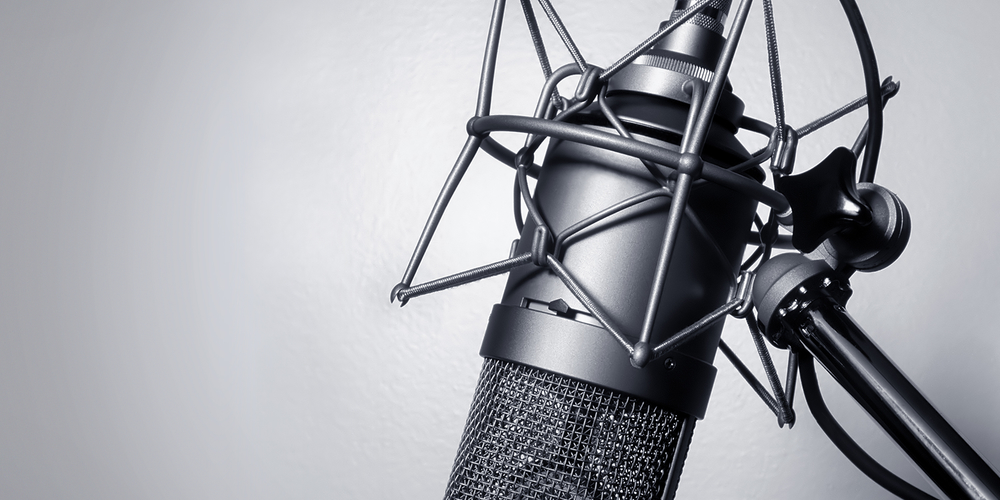
Whether you produce Rap Beats or rap music, there are many different recording techniques to learn about. Microphone placement is just one of them.
There are many variations of stereo recording options, so it is important to plan your microphone technique ahead of time. Each technique separates stereo information differently and is interpreted by the listener’s brain differently. The four most commonly used options are:
We will be breaking down the details of each technique to help you choose the best option for your stereo recording.
The coincident lives up to the meaning of its name, which is to occupy the same space or time. It uses dual microphones, placed together but angled differently, to capture sound. The XY method is most common.
The technique requires directional microphones, and the stereo image is dependent on level differences or the different volumes of the signals. It is done by placing one microphone’s diaphragm directly above the other’s at 90 degrees apart. The middle of both microphones should point toward the middle of your sound source.
When played back, you will get the perception of the sound coming from the right. This is because the first microphone is picking up your sound source more loudly. So the right channel will sound louder. That said, the XY technique has some drawbacks. Where it excels in localization, it lacks in a spacious sound. The narrow stereo image can be combated by moving the microphones closer to the source. Or you can just use the mid-side technique.
The mid-side technique also uses two microphones, but they have different patterns, rather than two cardioid microphones, like in XY. You will pick a microphone of any pattern and direct it straight toward your sound source for the mid. Then place a figure eight microphone, with its null axis directed toward the sources middle, in the same area. The figure eight will pick up sound from the sides, but not the middle out your source. You will need a decoder to play it in stereo.
Speaking of figure eight mics, there is another technique that uses two called the Blumlein pair. We could go deeper down this rabbit hole, but we still have space, near-coincident, and binaural to cover. So let’s move on.
Spaced setups are basic. Two microphones are set up to capture separate signals. A good example of this is an AB set up, which is typically done with omnidirectional microphones set side by side. The distance they are placed apart is up to you. The technique uses time differences to create a slight delay effect on playback. The listener’s ear will easily pick it up.
It can be tempting to place the microphones further and further apart in an attempt to capture the entire ensemble. However be careful. At some point, the mics can be too far apart. This will create a sort of black hole in the middle. To prevent this, incorporate a third microphone in the center.
You can do a variation on the AB set up called the Decca Tree. It’s a three-microphone placement where there are side microphones and a middle. However, the middle microphone is placed further front. A rule of thumb is to place the middle mic half as far front as the side mics are apart from each other. Overall, spaced pair recordings are not as sharp in localization as coincident, but they have superior width and ambiance.
Near-coincident offers both the benefit the of level and time differences. By taking two directional microphones placed in an XY, but with diaphragms spaced seven inches apart and angled out 90 degrees or more, you can achieve sharpness, width, and space. The stereo image has greater accuracy and translates to the listener better.
The French ORTF is the most used form of this technique. The microphone’s diaphragms are angled at 110 degrees with a spacing of seven inches. A stereo bar makes the setup easier, but two microphone stands will work as well.
Other options are NOS and DIN techniques. They were developed in Holland and Germany respectively. The NOS specs are for microphones to be set at 90-degree angles and 30 centimeters apart. DIN specifies 90 degrees too, but spacing is only at 20 centimeters. All three options have unique sounds, and no one is better than another. The best idea is to play with the setup and see what option achieves the effect you want.
The goal of binaural microphone setups is to mimic the way a listener would naturally experience sound. It considers how our brains process sound. The human ears are set up like omnidirectional microphones. The exception being that the head is in between them. The pinnae reflect sound and, along with the head, separate frequencies and filter sound by its source. There is a three principal system of natural hearing:
To accomplish something similar to natural sound in a studio set up, you can approach it two ways:
1) A baffled omni set up.
2) Using a dummy head with mic ears.
A baffled omni is the less complicated of the two options. Just set up two omnidirectional microphones. Place a baffle in the middle, and mission accomplished! You can make a baffle yourself or purchase one.
For enhanced and superior stereo imaging you can use a dummy head. Your microphones will be placed where the ears should be. To have the best accuracy, choose a head that mimics the human head closely. You can even find models with nasal passages. The better the model, the more accurate the sound will be.
Each technique discussed in this blog is good for various recording types and effects. Play with them and familiarize yourself with their sounds. Stereo recording techniques work best with instruments or multiple vocalists, but it isn’t really necessary for recording one vocalist.
Once you are ready to hit the studio come to JBZ Beats. We have rap beats, and hip hop beats for sale. Take your sound to the next level!
Source URL: https://www.jbzbeats.com/recording-over-rap-beats-stereo-microphone-techniques/

